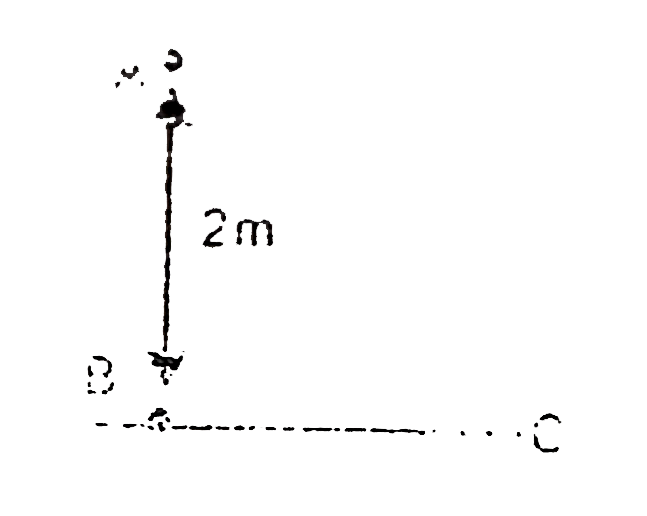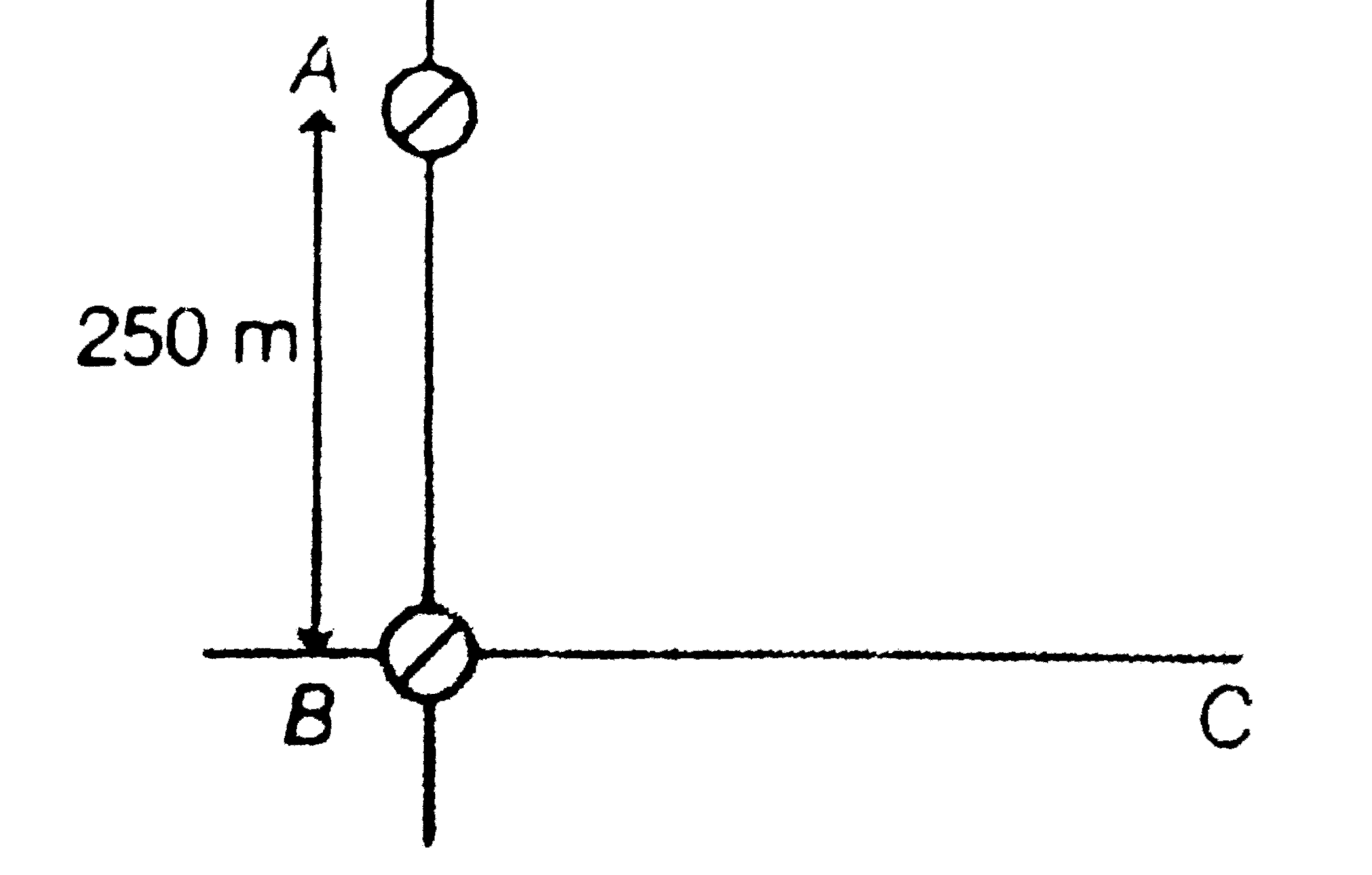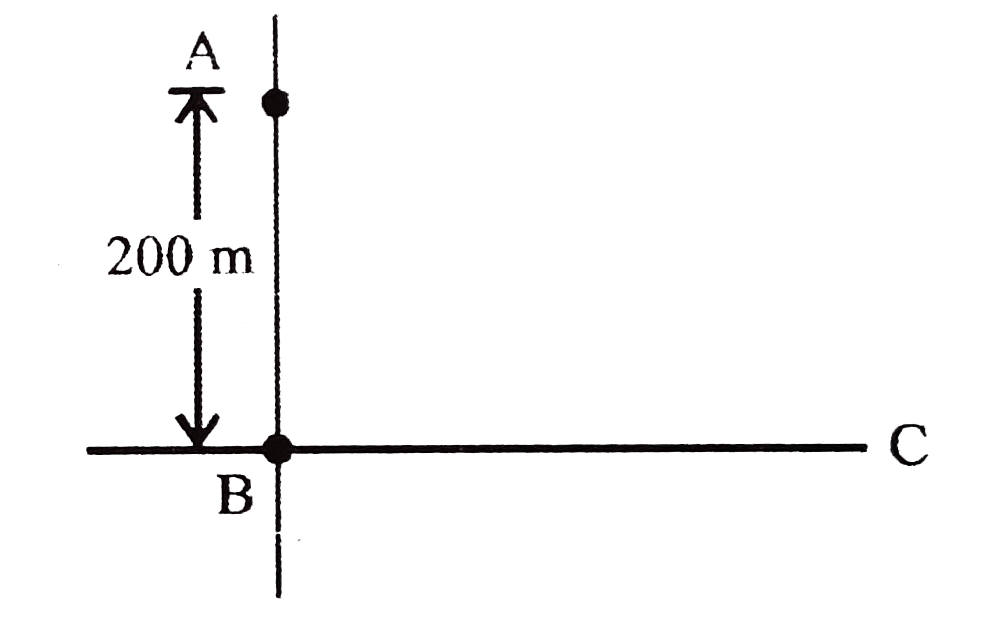Two identical loudspeakers are located at point A & B,2m apart. The loudspeakers are driven by the same amplifier (coherent and are in phase). A small detector is moved out from point B along a line frequency below which there will be no position

The correct Answer is:83Hz
Topper's Solved these Questions
- SOUND WAVESBOOK - RESONANCECHAPTER - SOUND WAVESEXERCISE - Exercise- 1 PART - II
30 Videos
- SOUND WAVESBOOK - RESONANCECHAPTER - SOUND WAVESEXERCISE - Exercise- 2 PART - I
25 Videos
- SOUND WAVESBOOK - RESONANCECHAPTER - SOUND WAVESEXERCISE - Board Level Exercise
33 Videos
- SIMPLE HARMONIC MOTIONBOOK - RESONANCECHAPTER - SIMPLE HARMONIC MOTIONEXERCISE - Exercise
28 Videos
- STRING WAVESBOOK - RESONANCECHAPTER - STRING WAVESEXERCISE - Exercise
32 Videos
Similar Questions
Two identical loudspeakers are located at points A & B, 2 m apart. The loudspecakers are driven by the same amplifier. A small detector is moved out from B along a line perpendicular to the line connecting A & B. Taking speed of sound in air as 332m/s. Find the frequency below which there will be no position along the line BC at which destructive interference occurs.

View SolutionTwo radio transmitters radiating in phase are located at point A and B, 250 m apart. The ratio wave have frequency of 3MHz. A radio receiver is moved out from point B along a line BC (perpendicular to AB). The distance from B beyond which the detector does not detect any minima si :

View Solution
Knowledge Check
Two radio transmitters radiating in phase are located at point A and B, 250 m apart. The ratio wave have frequency of 3MHz. A radio receiver is moved out from point B along a line BC (perpendicular to AB). The distance from B beyond which the detector does not detect any minima si :
 A200 mB400 mC600 mD500 m
A200 mB400 mC600 mD500 mTwo loudspeakers are located 3 m apart on the stage of an auditorium. A listener at point P is seated 29.0 m from one speaker and 25.0 m from the other. A signal generator drives the speakers in phase with the same amplitude and frequency. The wave amplitude at P due to each speaker alone is A. The frequency is then varied between 20 Hz and 300 Hz. The speed of sound is 343 m/s.
At what frequency or frequencies will the listener at P hear a maximum intensity?A170 Hz onlyB57 Hz, 113 Hz, 170 Hz, 227 Hz, and 284 HzC113 Hz and 226 HzD86 Hz, 170 Hz, 257 HzTwo loudspeakers are located 3 m apart on the stage of an auditorium. A listener at point P is seated 29.0 m from one speaker and 25.0 m from the other. A signal generator drives the speakers in phase with the same amplitude and frequency. The wave amplitude at P due to each speaker alone is A. The frequency is then varied between 20 Hz and 300 Hz. The speed of sound is 343 m/s.
Determine the value of the maximum amplitude in terms of A.A2.0AB3.0 AC2.5 AD4.0A
Two radius antennas radiating wave in phase are located at point A and B ,200m part(figure) The radio waves have a frequency of 6MHz.A radio receiver in moved out form pointB along a line perpendicular to the line connecting A and B(lineBC shown in figure)at time distances from B will there be destructive interference?

View SolutionTwo identical loudspeakers placed 3.00m apart are driven by the same oscillator as shown in Fig. 7.12. A listener is originally at point O , located 8.00m from the centre of the line connecting the two speakers. The listener then moves to point P, which is a perpendicular distance 0.350m from O , and she experiences the first minimum sound intensity . What is the frequency of the oscillator ?

View SolutionTwo identical loudspeakers are placed on a line at distance 4m and 6m from a microphone lying on the line joining them. The output of each speaker at the microphone is 2mW. If the two speakers are connected in series and excited by the same oscillator and they vibrate in phase with each other, the resultant ouput of the microphone will be
(frequency of oscillator =660Hz and speed of sound =330m/s)
View SolutionAs shown in the figure, two loudspeakers are located at point A and B. Both are vibrating in phase at a frequency (v) and P1 and P2 are their respective power outputs. Point C lies on a line joining the two loudspeakers at a distance of d1 from A and d2 from B. With both speakers switched on what is the power (in Wm2 ) at point C. Take velocity of sound =300ms−1, frequency' v=100Hz,dt=1m and d2=1.5m,P1=8π watts and P2=18π watts. Also assume that loudspeakers behave like isotropic sources. (emit sound uniformly in.all directions).
'(##CEN_KSR_PHY_JEE_C17_E01_031_Q09##)'
View SolutionTwo identical loudspeakers are placed on a line at distance 4m and 6m from a microphone lying on the line joining them. The output of each speaker at the microphone is 2mW. If the two speakers are connected in series and excited by the same oscillator and they vibrate in phase with each other, the resultant ouput of the microphone will be
(frequency of oscillator =660Hz and speed of sound =330m/s)
View Solution
